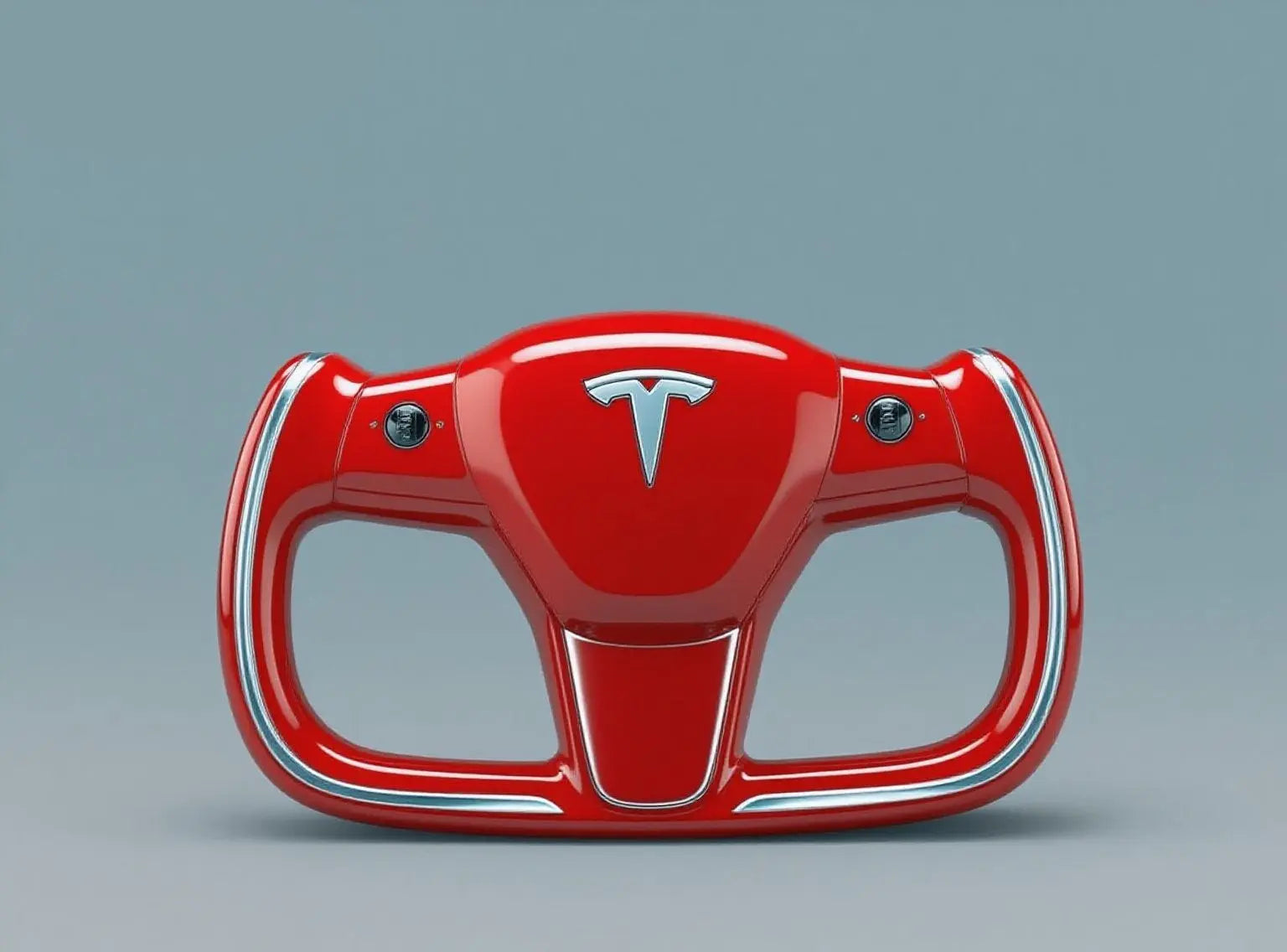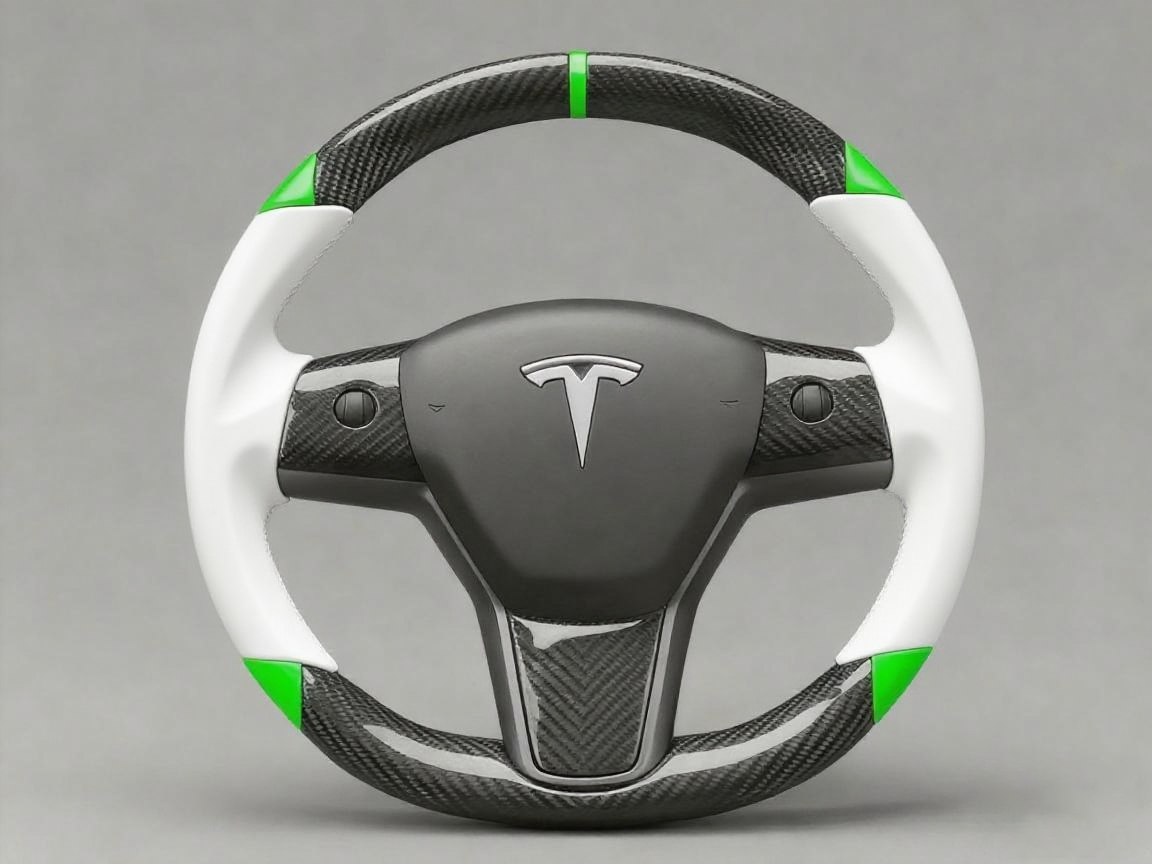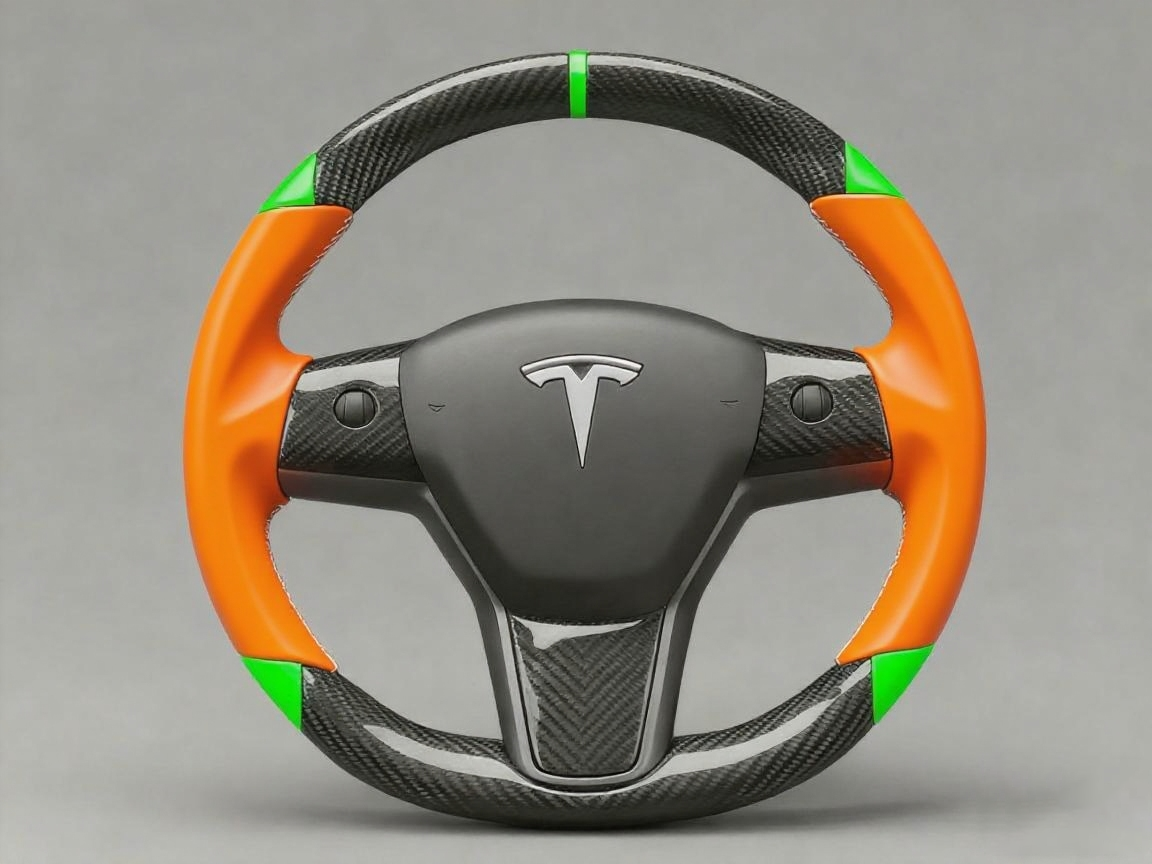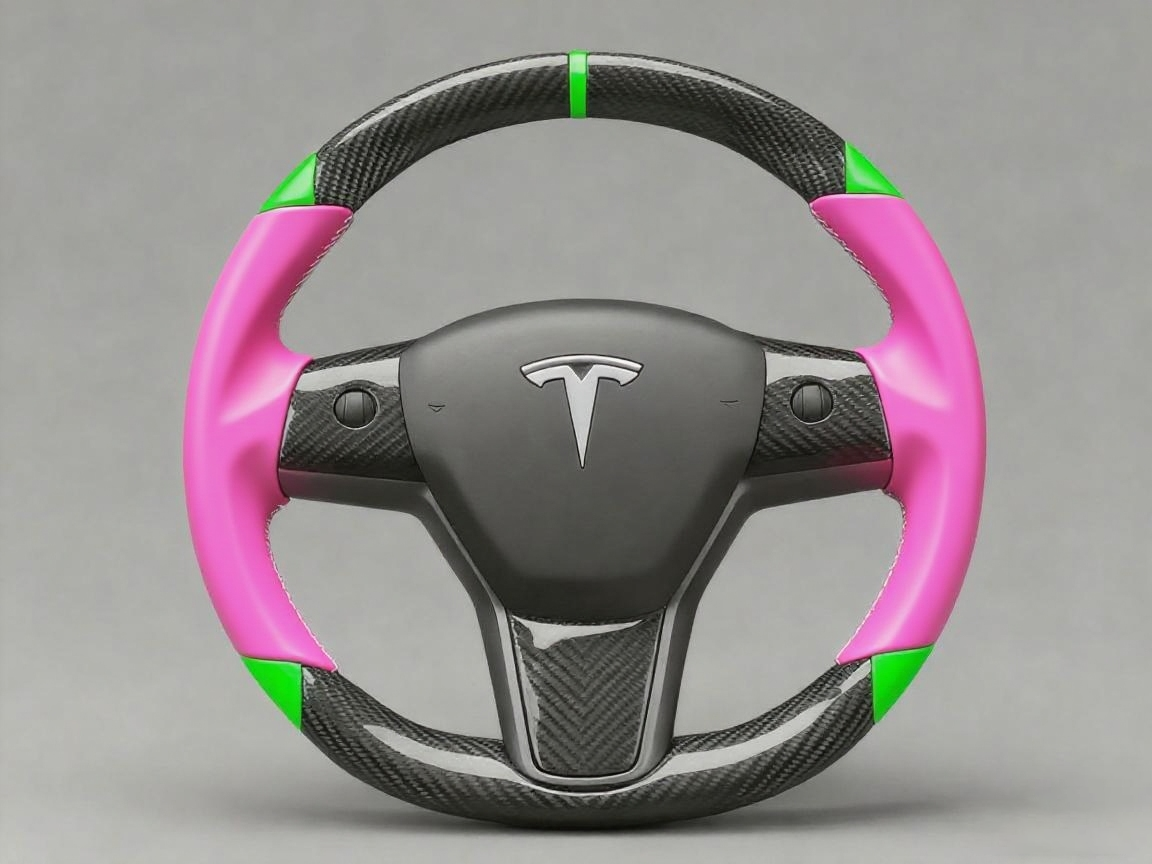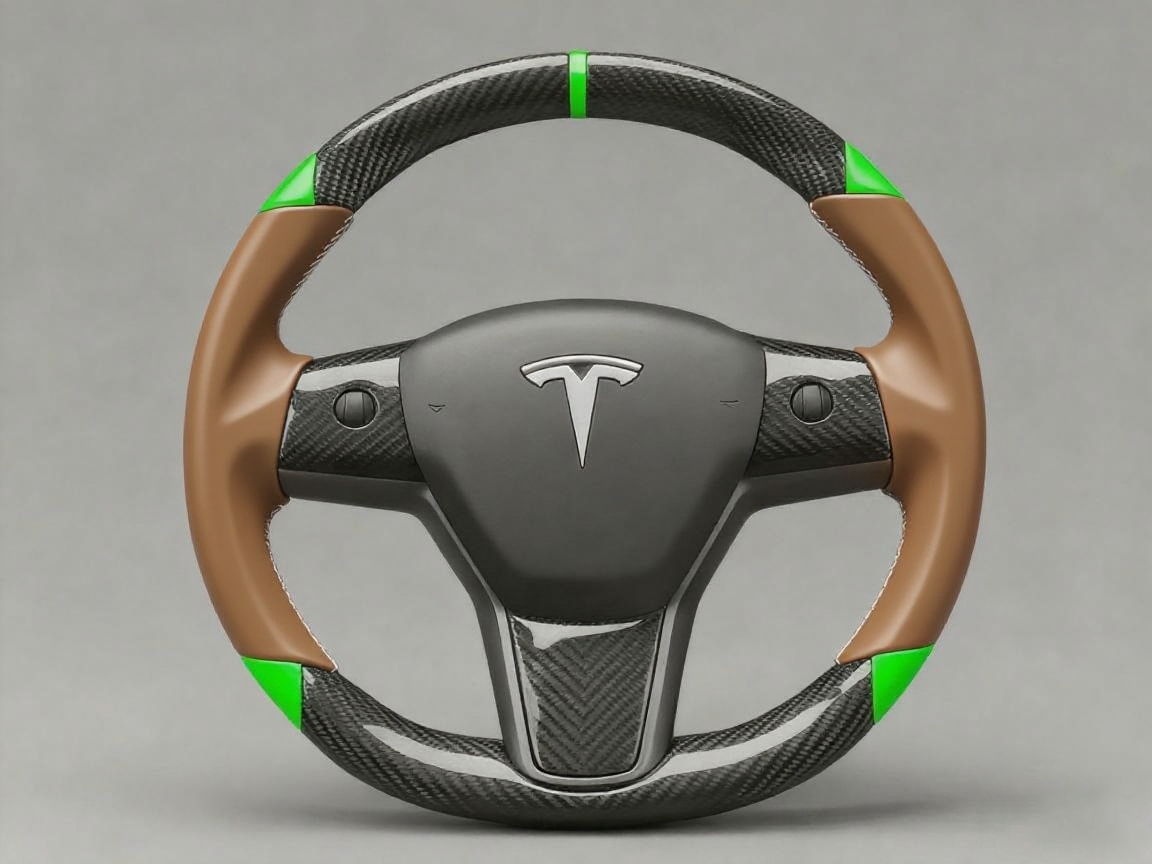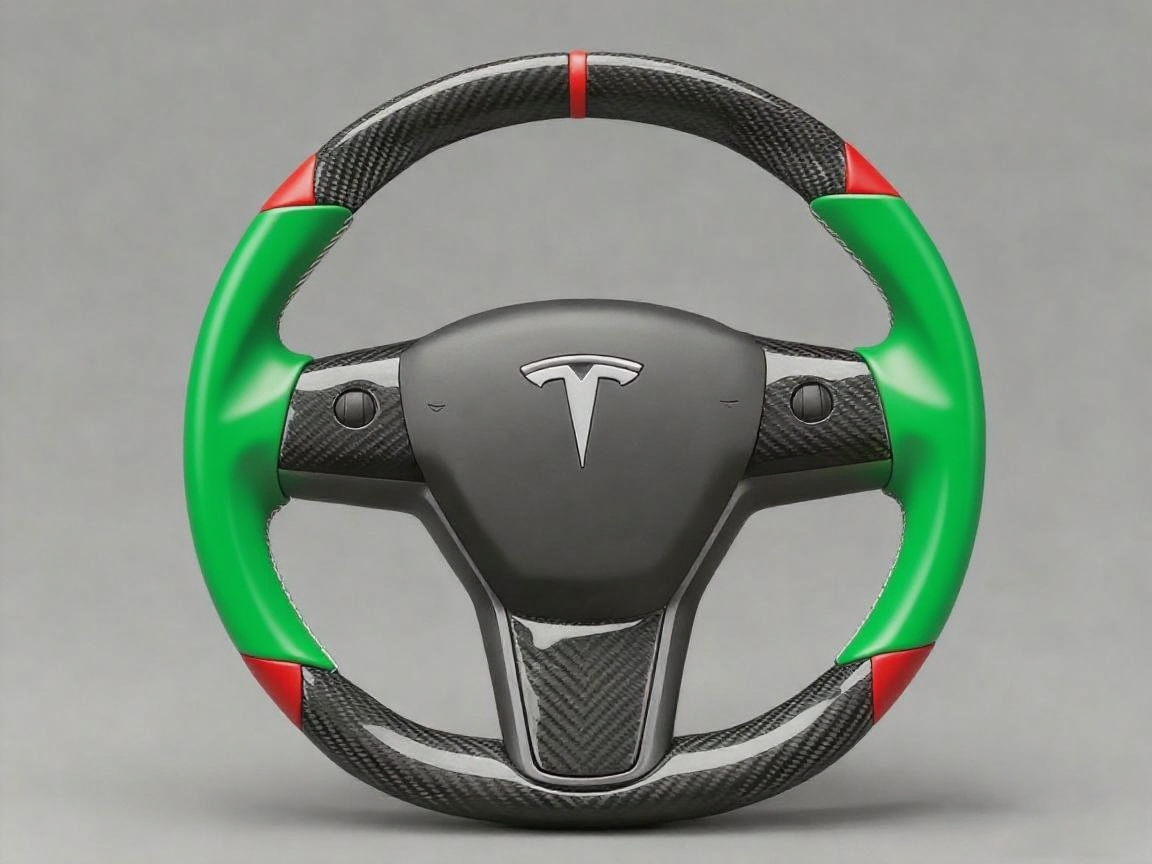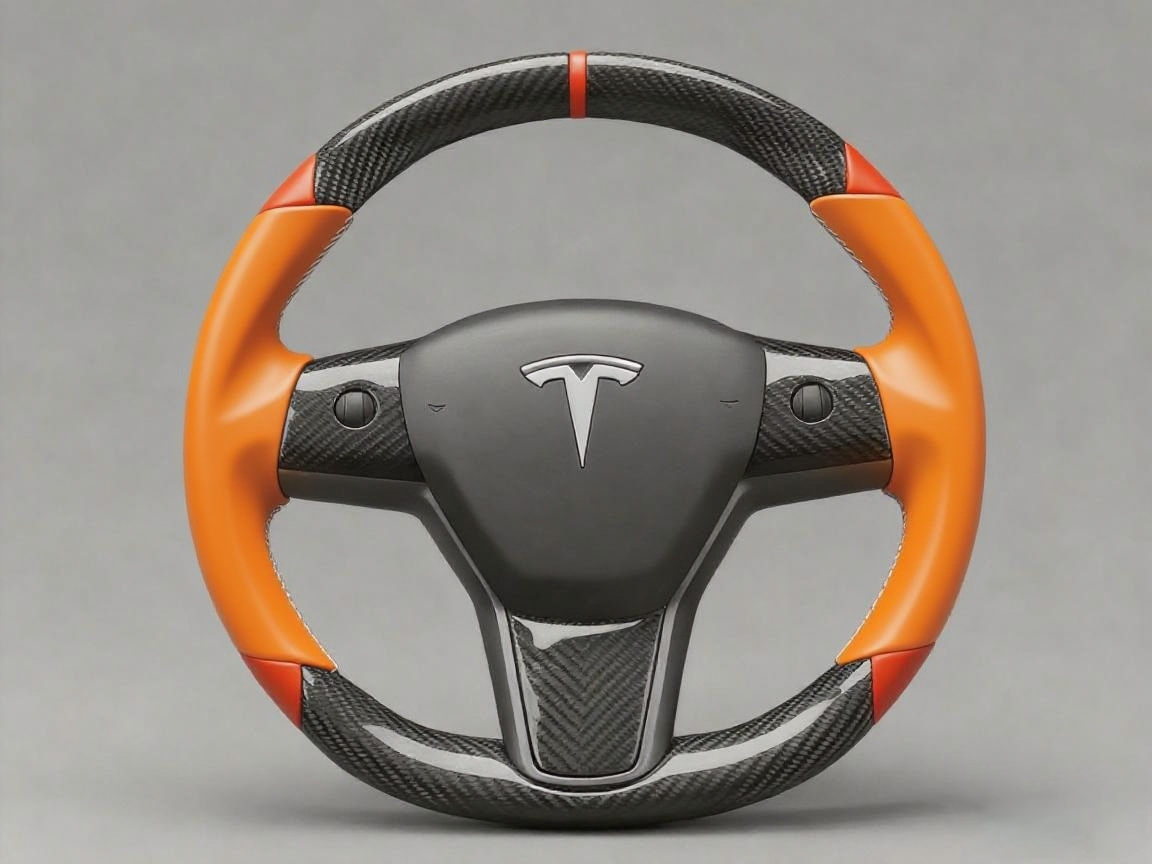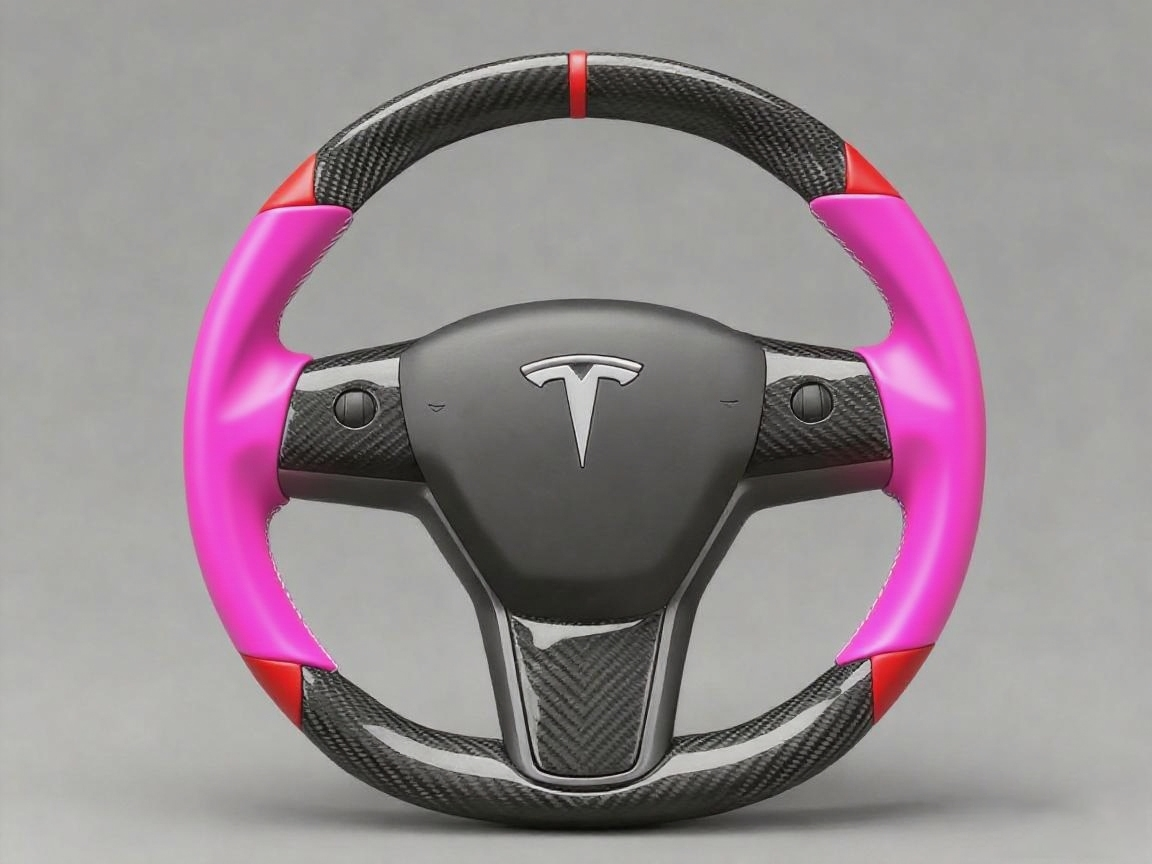Can this truly be called a steering wheel? Doesn't the very term imply a complete circle, a closed loop of certainty that one can fully grasp? But this object before me, this yoke with its top sliced off, doesn't it negate that definition from the very start? The missing arc—is it there to let me see more of the road ahead, or is it a void, a reminder of the control that has already been taken from my hands?
And why did the designer choose this color? This hyper-glossy, almost unreal red—isn't it mimicking the hue of a warning signal? Is it meant to ignite my passion for driving, or to suggest some underlying danger? And the cold chrome trim, tracing the frame like a precise surgical incision, is it merely an aesthetic choice? Or does it deliberately create a sense of alienation, reminding me that this is not a warm, familiar tool, but a cold driving controller?
How am I meant to hold this? When my hands take their place on these full, ergonomic grips, am I the one in control, or am I being molded into the posture the object demands? What functions lie dormant within those two silent, black scroll wheels? When the traditional turn signal stalk and wiper lever are gone, have I lost just two physical components, or have I lost a kind of innate, bodily intuition? Is this design philosophy of total integration truly for convenience, or is it meant to make me more dependent on a system I cannot see?
So, what is the ultimate purpose of this Tesla Steering Wheel? Is it to enhance my experience as a driver, or to completely re-educate me? Is it empowering me with new abilities, or is it stripping me of my old memories? As I sit in the car, hands on this broken circle, am I still a "driver" in the traditional sense? Or have I become a biological component in a sophisticated machine, a passenger who is permitted to participate but not to decide the ultimate direction?
In the end, the fundamental question remains unanswered: Who is really in control? Is it me, or is it this red enigma?
